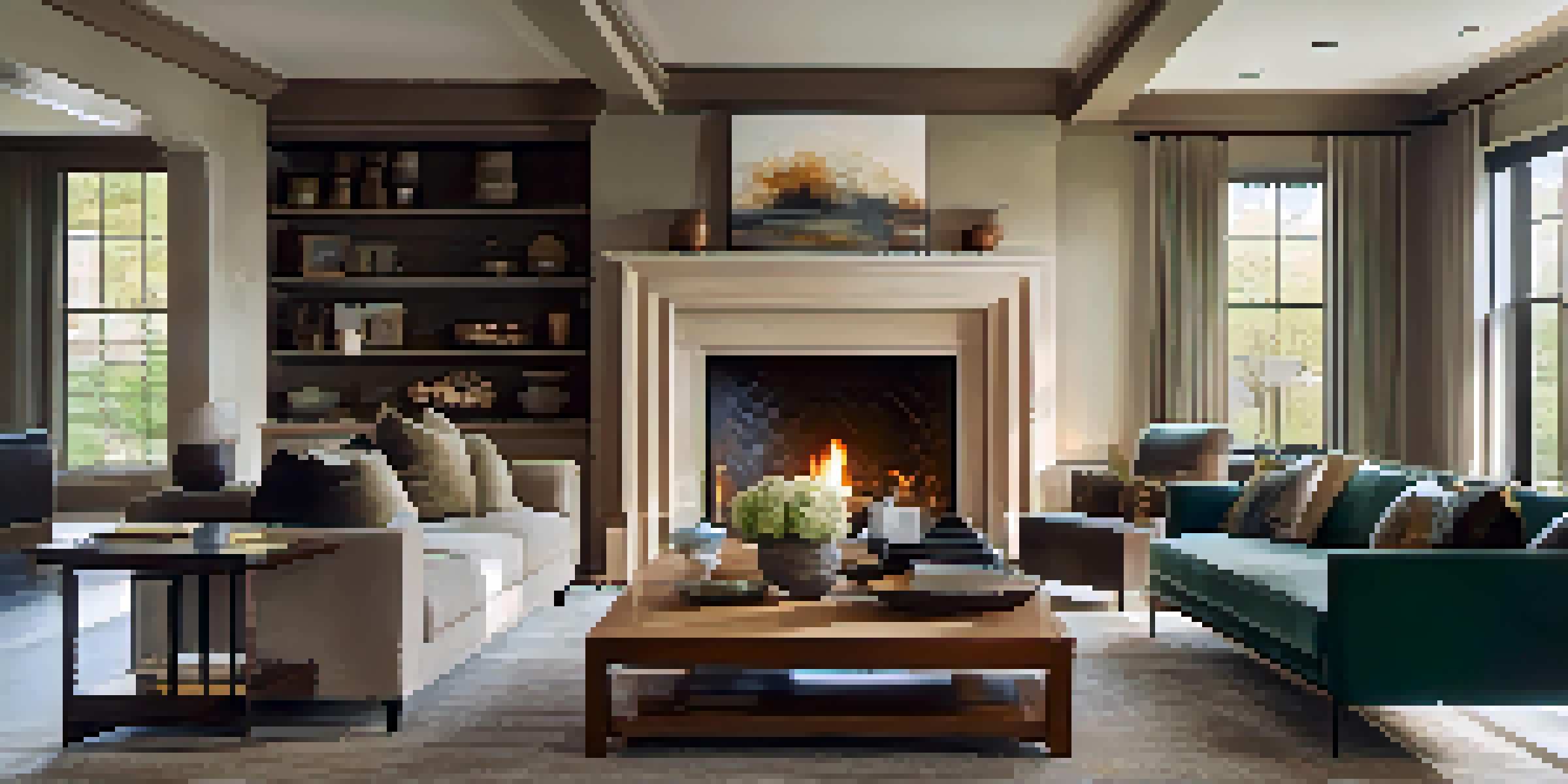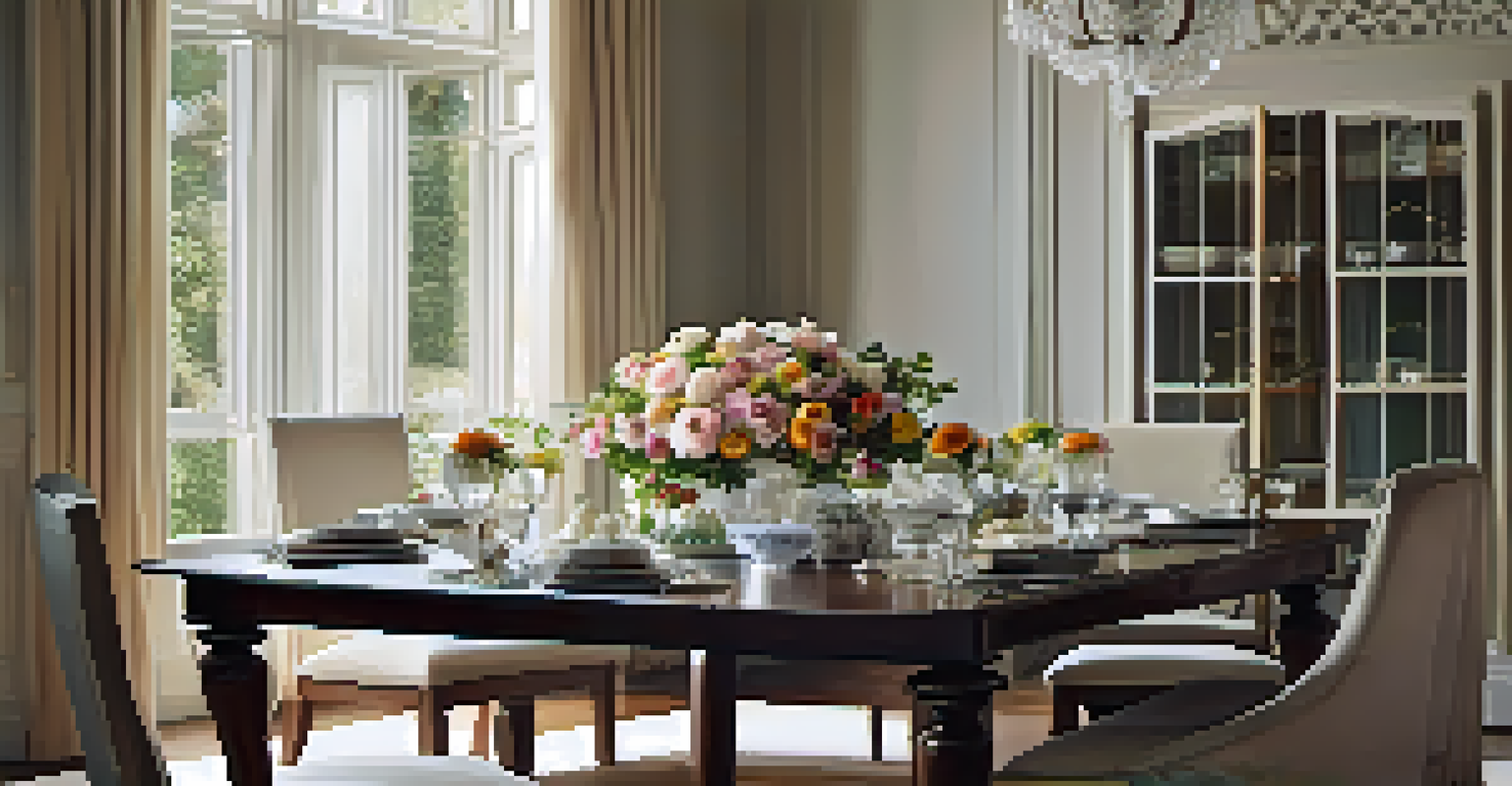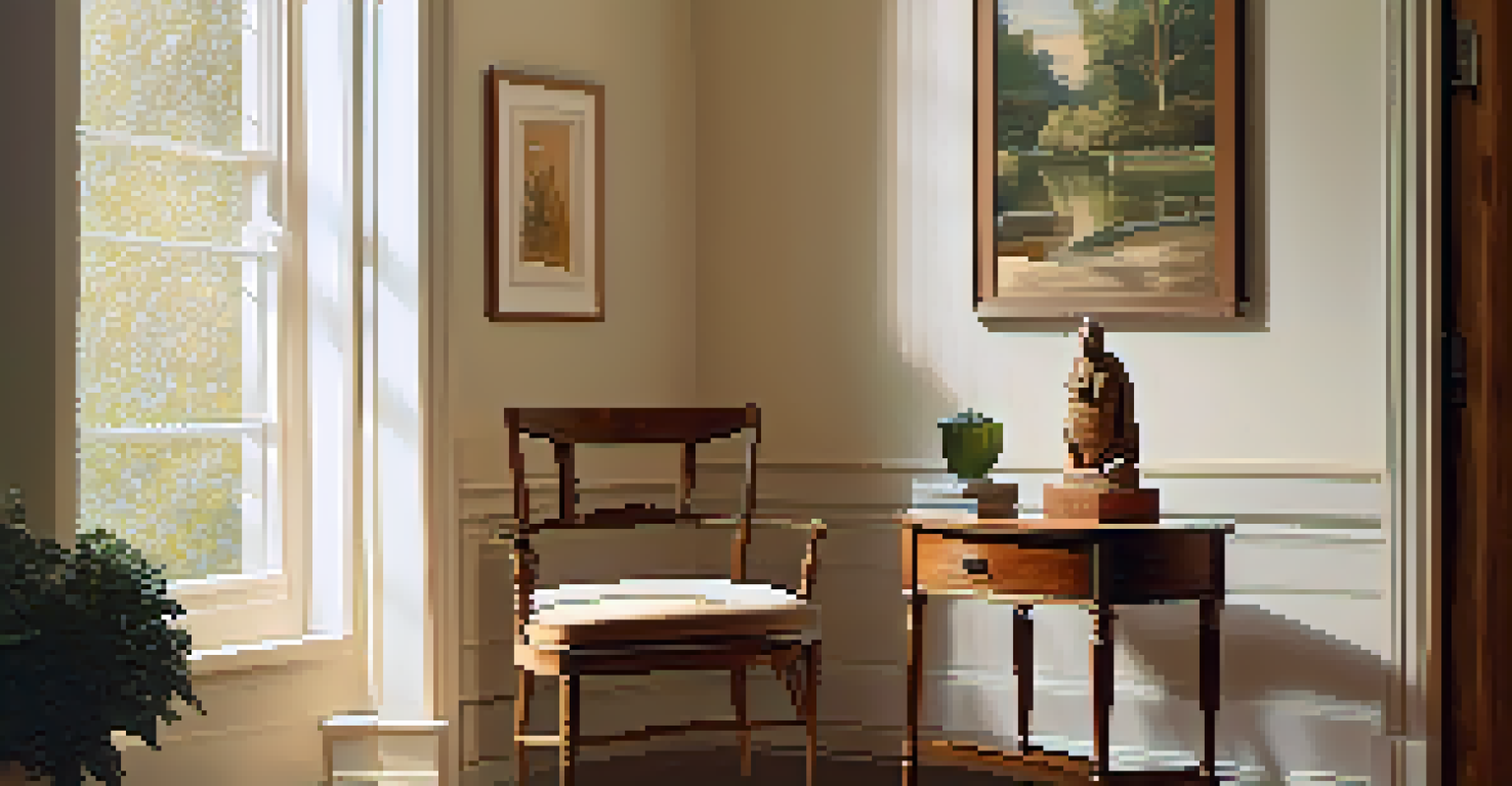Creating Focal Points with Carving in Home Interiors

Understanding Focal Points in Home Design
Focal points are essential in home design because they draw attention and create a sense of order. Think of a room as a stage, where the focal point is the star performer. It could be anything from a beautiful piece of art to a striking piece of furniture. By establishing a focal point, you guide the eye and create a more inviting space.
The details are not the details. They make the design.
Incorporating a focal point can transform an ordinary room into an extraordinary one. For example, a well-carved wooden fireplace mantel can serve as a stunning centerpiece in a living room. This not only adds visual interest but also reflects your personal style and taste. Imagine how a beautifully carved piece can evoke warmth and elegance.
When designing your space, consider how various elements interact with your chosen focal point. Lighting, color, and surrounding decor all play a role in enhancing its impact. The key is to create a harmonious balance that emphasizes the focal point without overwhelming the rest of the room.
The Role of Carving in Interior Design
Carving is an art form that adds depth and character to home interiors. From intricate woodwork to detailed stone carvings, these elements can serve as captivating focal points. They bring texture and dimension to spaces that might otherwise feel flat or uninviting. Just like a well-crafted sentence can elevate a story, carving can elevate your home’s design.

For instance, a hand-carved dining table can become a conversation starter during gatherings. Guests often admire the craftsmanship, sparking stories and connections. This social element is vital in making your home feel warm and welcoming. Each carved piece tells a story, whether it’s about the artisan or the materials used.
Focal Points Enhance Room Design
Establishing focal points in home design guides the eye and creates inviting spaces.
Moreover, carving can cater to various design styles, from rustic to modern. It’s a versatile technique that can complement your aesthetic, whether you prefer minimalist shapes or ornate designs. This adaptability allows you to express your unique taste while enhancing the overall ambiance of your space.
Choosing the Right Carved Elements
When it comes to selecting carved elements for your home, think about the style and mood you want to create. Do you prefer the elegance of a Victorian-style chair or the simplicity of Scandinavian design? Each choice contributes to the overall atmosphere of your space and should resonate with your personal taste.
Design is not just what it looks like and feels like. Design is how it works.
Consider the scale and proportion of the carved piece in relation to the room. A large, intricately carved armoire can dominate a small space, while a delicate carving might get lost in a grand room. Striking the right balance ensures that your focal points enhance, rather than detract from, the overall design.
Furthermore, think about the materials used in carving. Wood, stone, and even metal can have different impacts on a room’s feel. For example, a warm wooden carving can bring a sense of coziness, while a sleek stone piece might lend a more modern, sophisticated touch.
Incorporating Carved Pieces into Your Home
Integrating carved pieces into your home can be both exciting and challenging. Start by identifying areas in your space that could benefit from a focal point. This could be an empty wall, a corner, or even the center of a room. Once you have a space in mind, you can begin exploring carving options that resonate with your vision.
Placement is crucial when incorporating carved elements. For instance, a large carved mirror can enhance light and create an illusion of more space when hung above a console table. Conversely, placing a carved sculpture on a side table can draw the eye and create a delightful surprise in a seemingly simple setting.
Carving Adds Depth and Character
Intricate carvings serve as captivating focal points that enhance the texture and dimension of interiors.
Don't shy away from mixing different styles of carving. A contemporary carved lamp can beautifully complement traditional woodwork, creating an eclectic yet cohesive look. The key is to maintain a sense of harmony while allowing your personality to shine through.
Maintaining Your Carved Pieces
Once you've introduced carved elements into your home, it’s essential to maintain them properly. Regular dusting and cleaning can prevent buildup that might dull their beauty. For wooden carvings, occasional polishing with a suitable product can enhance their luster and longevity.
Be mindful of the environment where your carved pieces are displayed. For example, humidity and direct sunlight can affect the integrity of wood over time. Using coasters under decorative items and avoiding placing them near heat sources can help preserve their quality.
Additionally, consider seasonal decorations that can complement your carved pieces. Seasonal flowers or themed decor can refresh the space while keeping the focus on your beautiful carvings. This way, you create a dynamic atmosphere that evolves with the seasons.
The Emotional Impact of Carved Decor
Beyond aesthetics, carved decor can evoke emotions and memories. A family heirloom, like a carved chest, may remind you of cherished moments spent with loved ones. This emotional connection can transform a house into a home, providing comfort and a sense of belonging.
Artistic carvings often tell stories of culture and history, allowing you to connect with your heritage. A carved tribal mask or a piece inspired by local artisans can add depth to your decor while celebrating your roots. Each piece becomes a conversation starter, inviting others to share in its story.
Emotional Connection to Decor
Carved decor not only beautifies a home but also evokes emotions and memories, adding a personal touch.
Moreover, the craftsmanship behind carving is itself a form of art that deserves appreciation. Supporting artisans not only helps preserve traditional skills but also adds a unique touch to your home. The joy of knowing that your decor is handcrafted can enhance your overall living experience.
Final Thoughts on Carving as a Design Element
Incorporating carved elements into your home design can create stunning focal points that reflect your personality and style. Whether it's a grand statement piece or a subtle accent, carving adds layers of beauty and intrigue to your interiors. The possibilities are endless, and the impact can be profound.
As you embark on this design journey, remember to prioritize both function and aesthetics. Each carved piece should not only look good but also serve a purpose in your space. This balance ensures that your home feels both beautiful and livable.

Ultimately, the goal is to create a space that resonates with you. Embrace the art of carving as a means to enhance your home’s character and warmth. By doing so, you're not just decorating; you're curating an environment that tells your unique story.